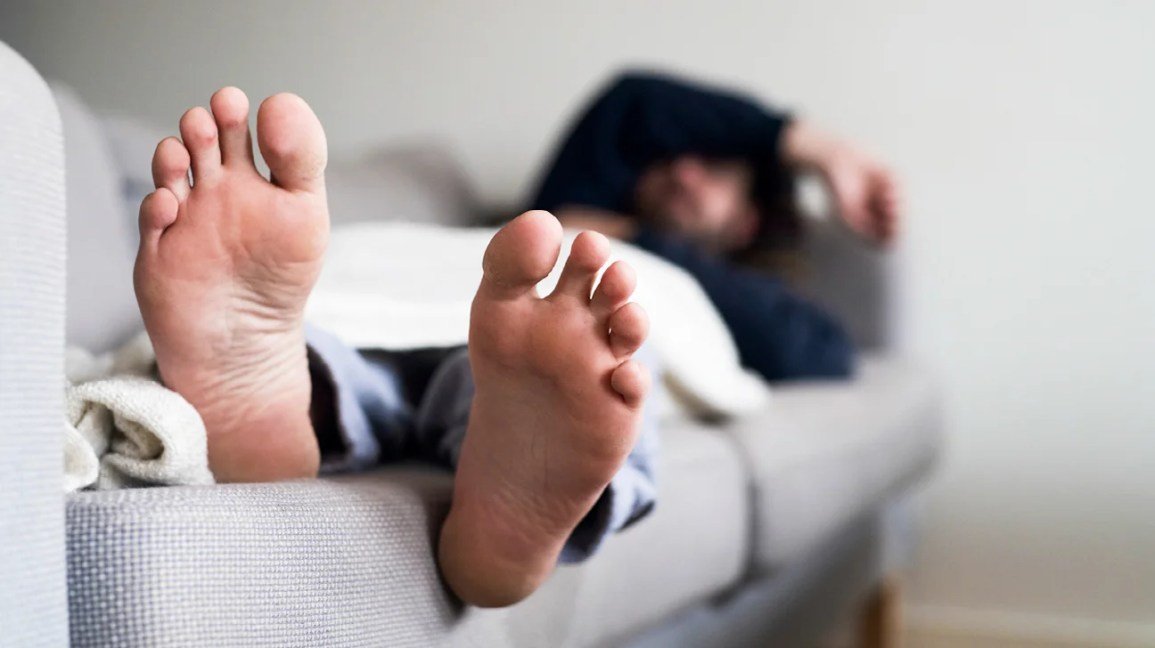To wake up a sleeping foot, gently massage it and slowly move it around to restore circulation. The tingling sensation might be discomforting, but it’s a sign that blood flow is returning. Avoid sudden movements to prevent pins and needles. Keep reading to learn more about how to wake up sleeping foot and prevent it from happening frequently.
How to Wake Up Sleeping Foot: Tips and Tricks for a Quick Recovery
Have you ever experienced that tingling sensation in your foot when it falls asleep? It can be quite uncomfortable and sometimes even painful. In this guide, we will explore the reasons behind a sleeping foot and share effective methods to wake it up quickly. Let’s dive in!
Understanding Why Your Foot Falls Asleep
Before we jump into how to wake up a sleeping foot, it’s essential to understand why it happens in the first place. When you sit or lie down in a position that puts pressure on your nerves, blood flow to that area can be restricted, leading to a tingling sensation. This can happen due to sitting cross-legged for an extended period, wearing tight shoes, or even leaning on your foot for too long.
The Science Behind a Sleeping Foot
When the blood flow is restricted, it deprives your nerves of oxygen and essential nutrients, causing them to send signals to your brain that result in that pins-and-needles feeling. This is your body’s way of telling you to change positions to ease the pressure and restore proper circulation.
Effective Techniques to Wake Up Your Sleeping Foot
1. Wiggle Your Toes
One of the simplest ways to wake up a sleeping foot is by gently wiggling your toes. This movement helps stimulate blood flow and signals your nerves to ‘wake up.’ Start by slowly wiggling your toes back and forth until you start feeling the sensation returning to your foot.
2. Change Your Position
If you’ve been sitting or lying down in one position for too long, the key is to change it up. Stand up, stretch your legs, or walk around to help improve circulation to your foot. By shifting your weight and posture, you can relieve the pressure on the affected nerves and encourage blood flow to return to normal.
3. Massage Your Foot
Another effective method to wake up a sleeping foot is by gently massaging it. Use your hands to apply light pressure in circular motions on the sole of your foot and around the toes. Massage helps relax the muscles, improve blood flow, and alleviate the tingling sensation in your foot.
4. Stand and Shift Your Weight
If you’re sitting down when your foot falls asleep, try standing up and shifting your weight from one foot to the other. This movement helps stimulate circulation and can quickly relieve the discomfort in your foot. Additionally, stretching your legs and calf muscles can further promote blood flow to the affected area.
Preventing Foot Fall Asleep in the Future
While knowing how to wake up a sleeping foot is crucial, it’s equally important to prevent it from happening frequently. Here are some tips to help you avoid that uncomfortable sensation in the future:
1. Avoid Prolonged Sitting
Try not to sit in the same position for too long, especially with your legs crossed or under you. Changing positions frequently can help prevent pressure on your nerves and maintain proper blood flow to your feet.
2. Wear Comfortable Shoes
Ensure your shoes are comfortable and provide adequate support for your feet. Tight shoes can restrict blood flow and lead to a sleeping foot. Opt for footwear that allows your feet to move freely and doesn’t constrict circulation.
3. Stay Active
Regular physical activity can help improve overall circulation in your body, reducing the likelihood of your foot falling asleep. Incorporate activities like walking, stretching, or even simple foot exercises to keep your blood flowing and prevent numbness in your feet.
Dealing with a sleeping foot can be a momentary inconvenience, but knowing how to wake it up quickly can make all the difference. By understanding the causes behind a sleeping foot and using simple techniques like wiggling your toes, changing positions, and massaging your foot, you can restore normal sensation in no time.
Remember, prevention is key to avoiding a sleeping foot in the future. By staying active, wearing comfortable shoes, and avoiding prolonged sitting, you can keep your feet happy and healthy. We hope these tips and tricks help you conquer the pins-and-needles sensation and keep you on your toes!
How to Wake up Your Foot with Foot Massage
Frequently Asked Questions
How can I wake up a sleeping foot?
To wake up a sleeping foot, try gently massaging the foot or wiggling the toes. Changing position or standing up and walking around can also help improve circulation and alleviate the numbness.
Is it normal for my foot to fall asleep frequently?
It is common for feet to fall asleep occasionally due to restricted blood flow or nerve compression. However, if you experience frequent foot numbness, it might be a good idea to consult a healthcare professional to rule out any underlying issues.
Can keeping my feet elevated help prevent foot numbness?
Elevating your feet can help improve blood circulation and reduce the likelihood of foot numbness. Try to elevate your feet above heart level for a few minutes several times a day to promote circulation.
Final Thoughts
When your foot falls asleep, it may feel tingly or numb due to restricted blood flow. To wake it up, try massaging or gently tapping the foot to increase circulation. Stretching and walking around can also help alleviate the sensation. Remember, staying in one position for too long can cause your foot to fall asleep, so be mindful of your posture. By following these simple steps, you can effectively wake up a sleeping foot and restore feeling quickly.









